Contrary to popular belief, not all trees are considered to be the best indoor Bonsai trees out there. In fact, most Bonsai trees prefer to be grown outdoors, given the fact that trees are rarely cultivated indoors! But what plants or trees do well as indoor growing Bonsai trees, and how can you best care for these specimens in your own home?
In this article, we will give you a list of some of the best indoor Bonsai tree options, including ones you may not have thought of before. We will go over just how easy some of these trees are for both the beginning and experienced Bonsai hobbyists. If you want to grow and care for your own Bonsai trees indoors, this is a good place to start!
Looking for some of the best Bonsai trees to try growing outdoors? Here’s a list of 12 of the best options, depending on your climate.
The 11 Best Indoor Bonsai Trees

©Mariusz S. Jurgielewicz/Shutterstock.com
If you are new to Bonsai care and cultivation, it’s important to note that indoor-grown Bonsai trees are often harder to cultivate compared to outdoor-grown Bonsai trees. In fact, most Bonsai trees adapt well to the seasons, typically only requiring protection from cold weather or harsh sunshine when grown outdoors. Only tropical or sub-tropical species can survive indoors.
However, it isn’t impossible to grow Bonsai trees indoors. You just have to choose the right plant or tree species to begin with! Some of the most popular and easy-to-care-for Bonsai tree species can be grown indoors. Just make sure you have a nice, bright window to keep your tree in, or purchase grow lights if necessary. With all this in mind, let’s check out 11 of the best indoor Bonsai tree options for you.
Ficus Ginseng

©Bulgn/Shutterstock.com
With a thick and swelled trunk at the base, the Ficus ginseng makes an eye-catching choice for an indoor-grown Bonsai tree. In fact, it is one of the most commonly grown indoor Bonsai trees out there, especially when you consider just how easy it is to care for. Your Ficus ginseng will not appreciate cold temperatures or drafts, so make sure you keep it in a location that is warm and stable. However, this is a fairly hardy Bonsai tree to begin with if you are new to cultivating!
Ficus Retusa

©iStock.com/RenataKa
If the Ficus ginseng is popular, then the Ficus retusa is even more popular. This is the number one Bonsai species for beginners as well as those seeking an indoor option. It grows quickly and thrives in an indoor climate, preferring temperatures between 50 to 65 degrees Fahrenheit. Ficus retusa plants also produce aerial roots that can be draped and displayed in beautiful, unique ways.
Rosemary
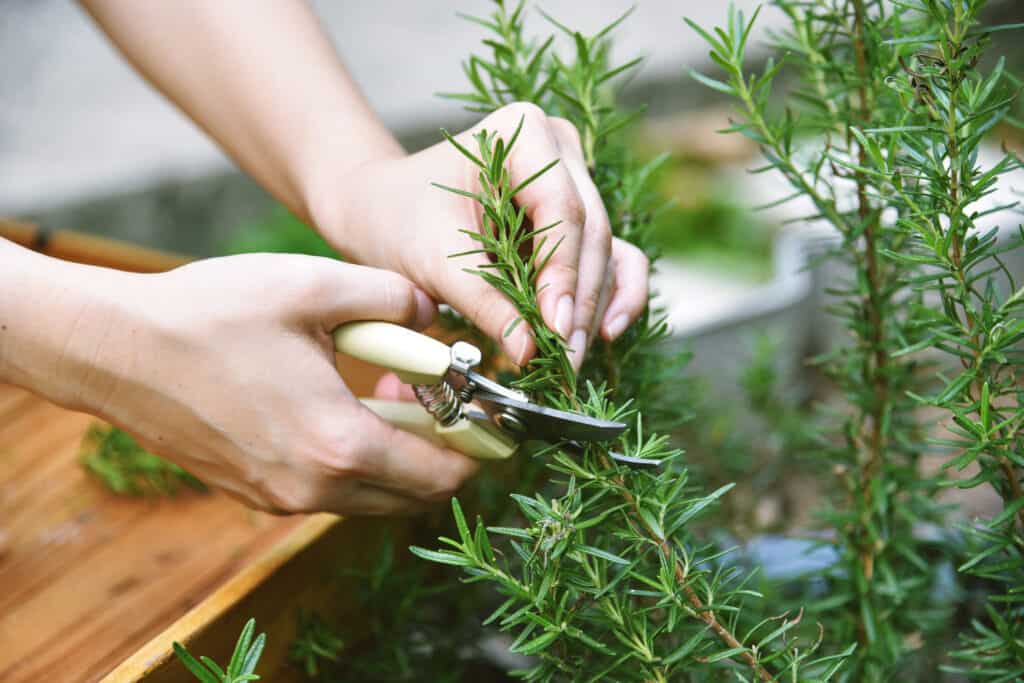
©iStock.com/Artfully79
Did you know that you can grow herbs as Bonsai trees? Besides thyme, rosemary is the number one herb to use in a Bonsai tree format. The woody branches and fast-growth habit of most rosemary plants make it a great specimen for this endeavor. You can easily keep a rosemary Bonsai tree on a windowsill in your kitchen, alongside any other herbs you may typically cook with. Plus, you can always harvest from your rosemary Bonsai tree, so long as you don’t take too much all at once!
Chinese Elm
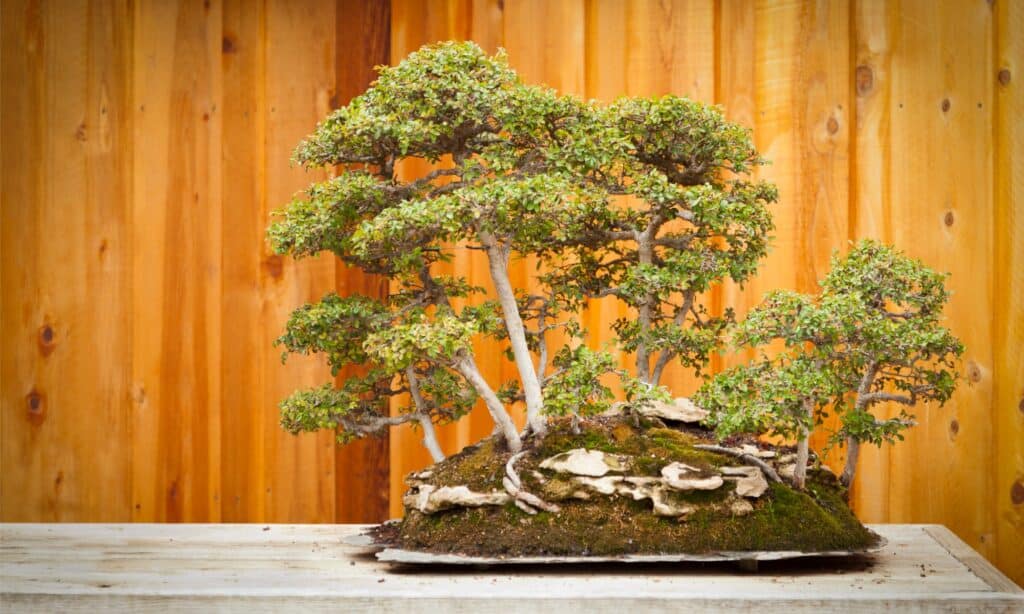
©iStock.com/Feverpitched
Another popular Bonsai tree species for beginners has to be the Chinese Elm. This is another common Bonsai tree and a great option for those of you who can’t decide whether or not you want to keep your Bonsai indoors or out. The Chinese Elm is particularly hardy and easy to prune, capable of living outdoors in the summertime and indoors in the wintertime. Plus, it produces small leaves that are delicate and attractive.
Schefflera
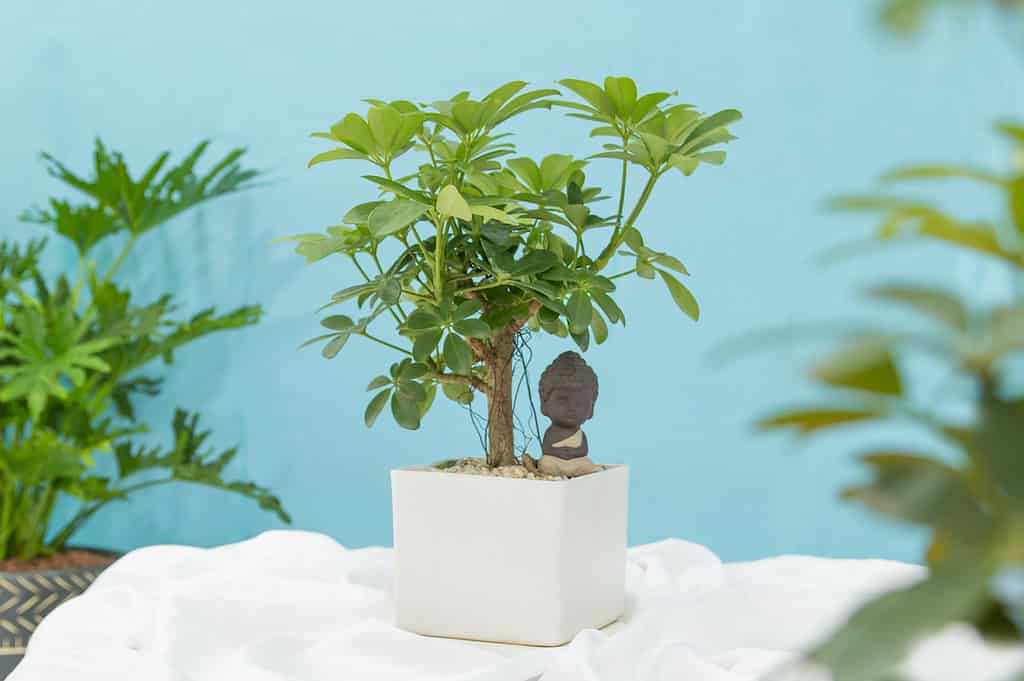
©Mid Tran Designer/Shutterstock.com
While it can’t be cultivated in the same way as other Bonsai trees, the Schefflera or dwarf umbrella tree is a great choice for an indoor Bonsai. The branches of this common house plants are too soft to be wired or manipulated, but thoughtful and consistent pruning may help you shape it the way you want. This option also grows aerial roots, giving you creativity and free rein with its design even if you can’t bend it and shape it in a traditional fashion.
Dwarf Jade
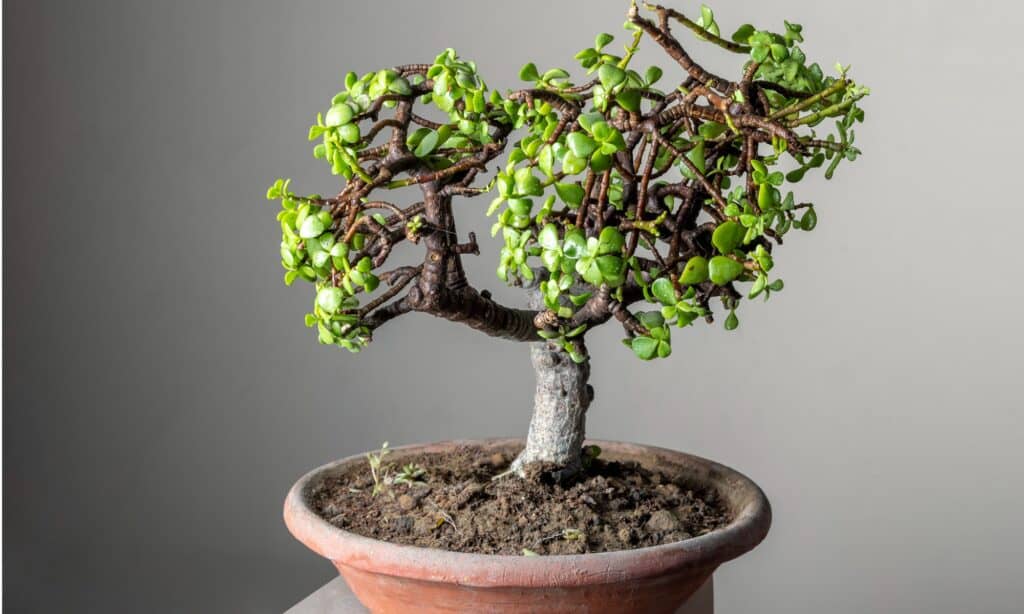
©iStock.com/prabhjits
Popular as a succulent plant as well as a Bonsai tree, dwarf jade plants thrive in full sunlight, even indoors. You may be able to grow this particular Bonsai tree outside, but cold temperatures will kill it. The trunks of the dwarf jade Bonsai tree start green but turn brown with age. Additionally, the leaves may develop a reddish tinge if your tree is properly cared for.
Sweet Plum
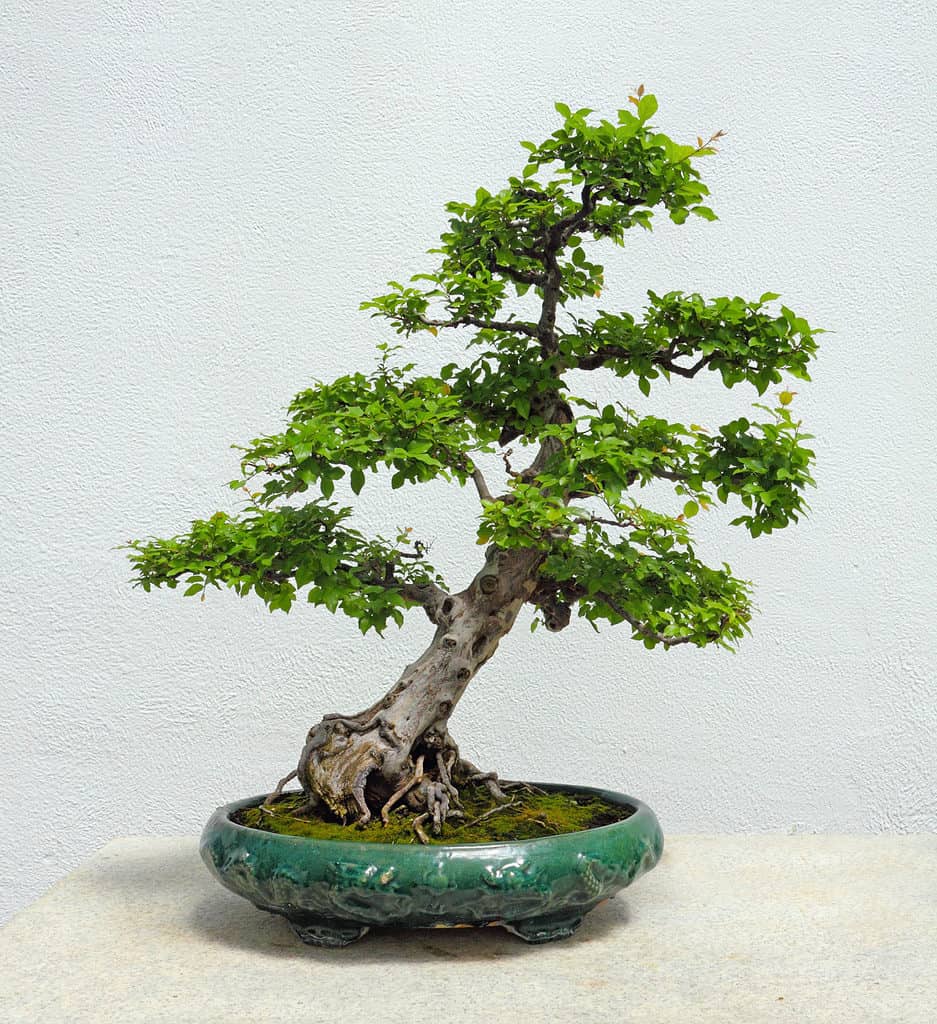
©Claude Huot/Shutterstock.com
While it may be a bit fussy, the sweet plum makes a wonderful Bonsai specimen when grown indoors. It requires temperatures ranging anywhere from 55 to 75 degrees Fahrenheit, though full sun is not necessary. Pay special attention when watering this particular Bonsai tree, as a single skipped watering date may spell death for this fussy choice! However, its bark is beautiful and peels in an artistic and unique fashion, making it popular despite its picky nature.
Fukien Tea
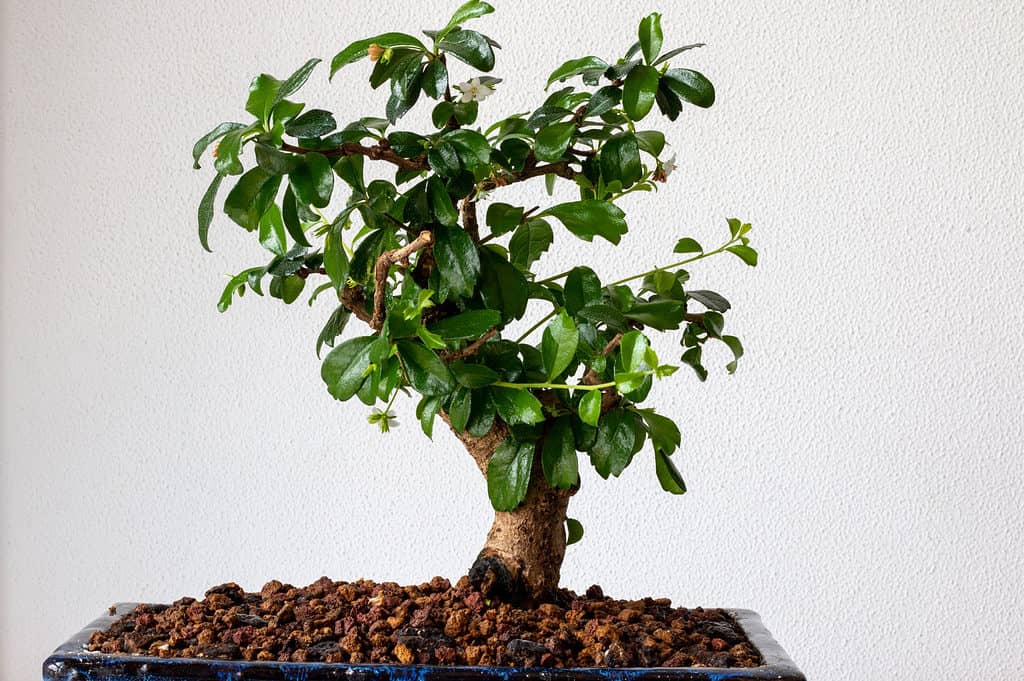
©Marcos PR/Shutterstock.com
With glossy green leaves paired with gray bark, the Fukien tea Bonsai tree is a beautiful indoor specimen. Also known as the Carmona, Fukien tea Bonsai trees prefer indoor temperatures over 70 degrees Fahrenheit. With consistent pruning, your Fukien tea Bonsai tree will produce thick branches and dense foliage. However, take care of the trunks and branches as the Bonsai tree ages. It can get brittle, especially when exposed to colder temperatures.
Snow Rose
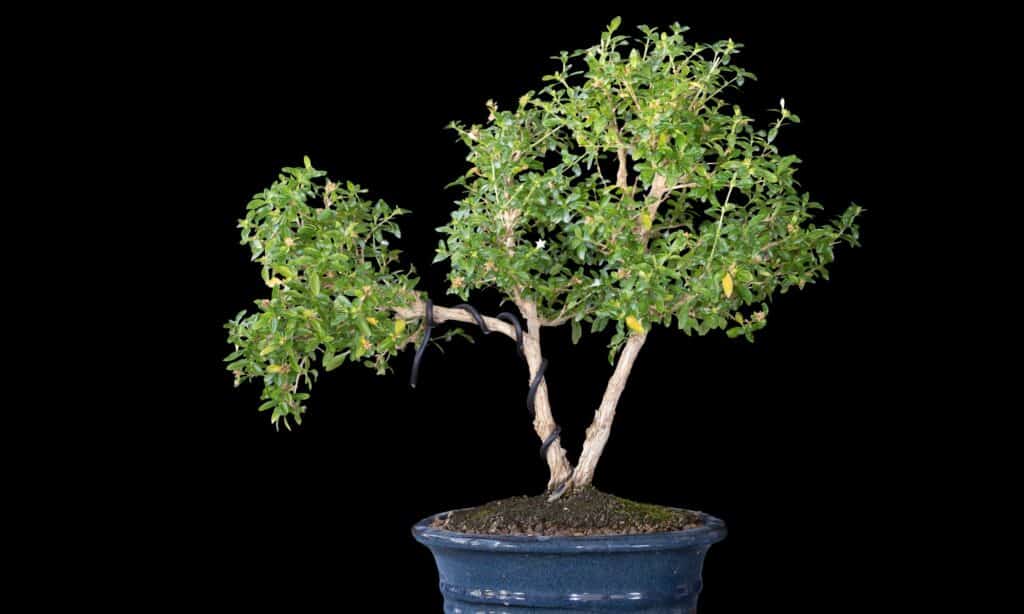
©iStock.com/taviphoto
Also known as Serissa, the snow rose Bonsai tree isn’t made for the faint of heart. Or rather, this Bonsai tree needs an experienced cultivator to help it reach its best size! Popular for its narrow trunks and flowering foliage, the snow rose Bonsai tree hates being moved. However, this is also a great option if you are looking for a Bonsai tree to move outdoors during the summertime. Serissa Bonsai trees enjoy warm weather, but they can be extremely fussy if moved often.
Money Tree

©Mid Tran Designer/Shutterstock.com
If you have ever received a money tree when moving into a new home, you likely know about the meaning behind this. Popular for its associations with luck and wealth, you can craft a common money tree into a Bonsai tree. However, it’s best to choose an option that doesn’t have a braided or twisted trunk. They can swell and crush each other, resulting in death for your Bonsai tree.
Boxwood
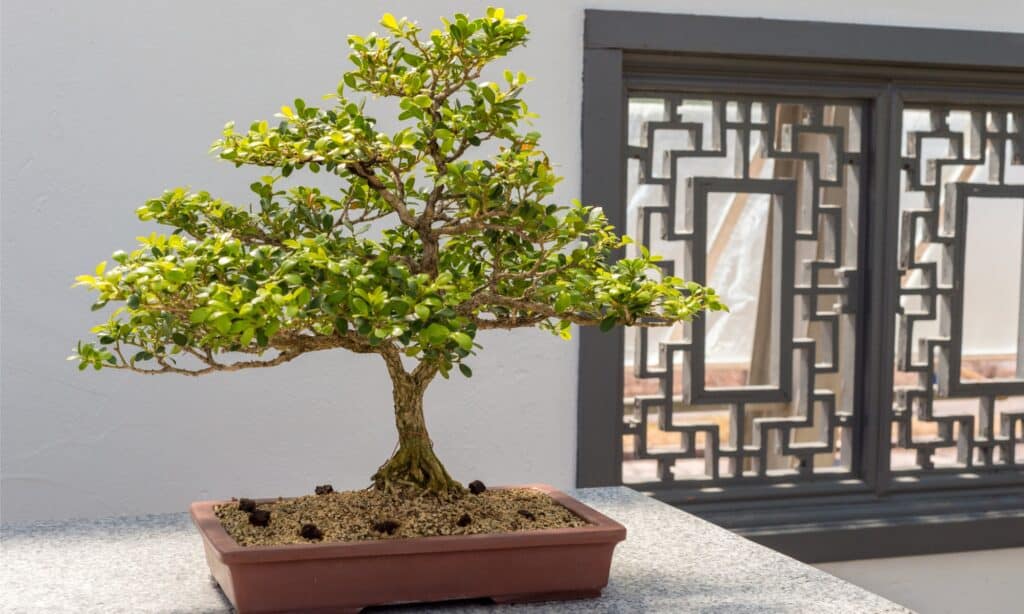
©iStock.com/MarcBruxelle
Another popular Bonsai tree option for growing both indoors and out has to be the boxwood. typically grown as a hardy and resilient shrub outdoors, boxwood plants make fantastic Bonsai specimens. They need protection during the winter, which makes them ideally suited to being grown indoors. However, the natural breezes and temperatures in the summertime will help your boxwood Bonsai thrive!
Up Next
- Discover The 20+ Different Types of Bonsai Trees
- The 10 Best Bonsai Trees for Beginners
- Discover the Oldest Bonsai Tree and Where to See it
The post The 11 Best Indoor Bonsai Trees for Your Home appeared first on AZ Animals.
from Animal News, Facts, Rankings, and More! - AZ Animals https://ift.tt/Az87aVv